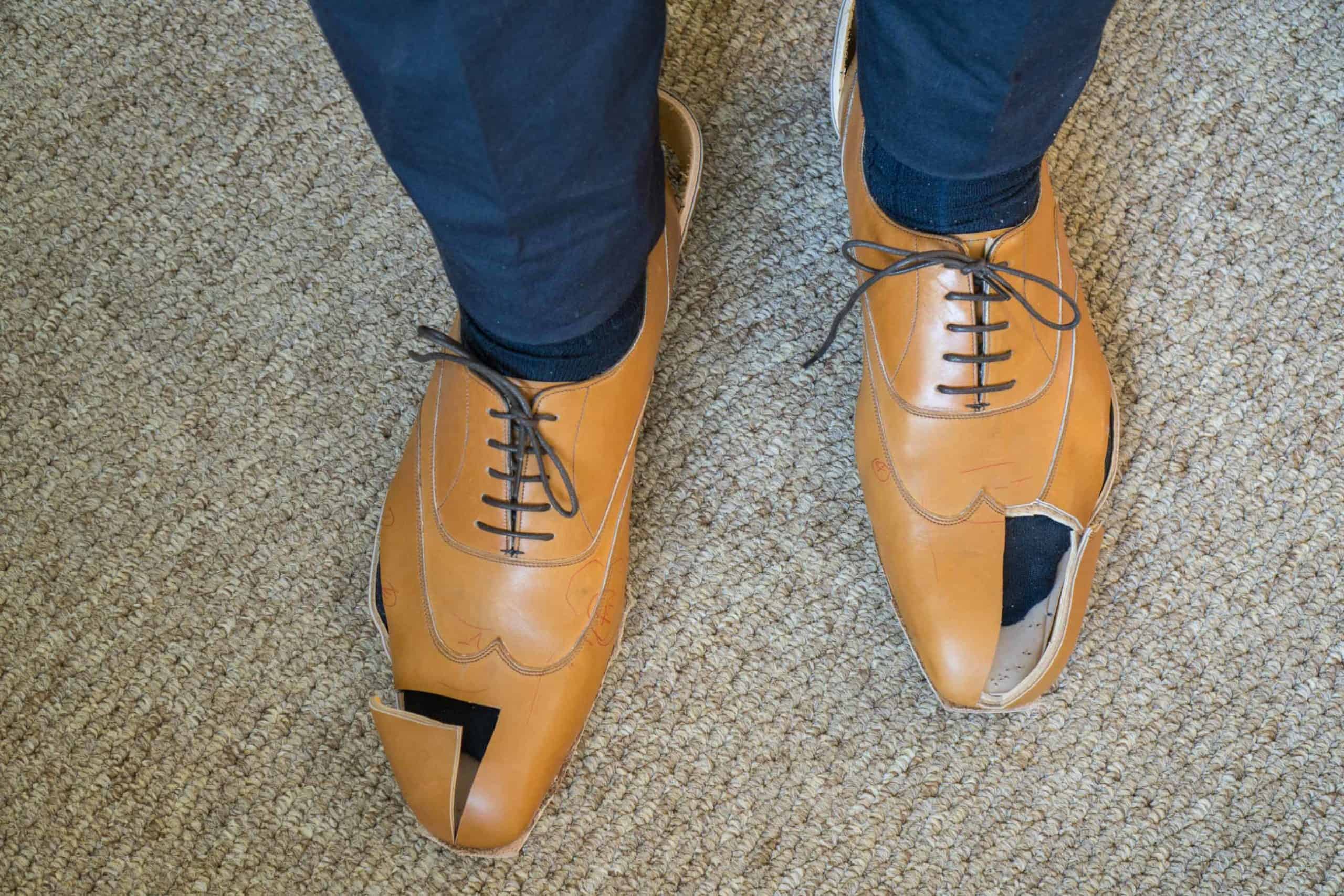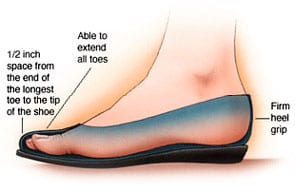When it comes to choosing the right footwear, one crucial aspect often gets overlooked: toe positioning. It might seem trivial, but understanding where your toes should be in shoes can significantly affect your comfort, performance, and even your overall foot health. Whether you’re a shoe enthusiast, fashion lover, or someone who’s simply seeking better footwear, this comprehensive guide will help you navigate the often confusing world of shoes.
Understanding Toe Positioning in Shoes
Before diving into specifics, let’s establish why toe positioning matters. When you slip your feet into a pair of shoes, the space and comfort for your toes can make or break your experience. Imagine spending the day in shoes that constrict your toes or leave them swimming in excess space; neither scenario is ideal. Proper toe positioning can help you avoid common foot problems like blisters, bunions, and plantar fasciitis.
What Happens When Toes Are Misaligned?
Wearing shoes that don’t accommodate your toes properly can lead to a variety of issues. For example, tight shoes can cause your toes to be squished together, increasing the risk of calluses and corns. On the other hand, shoes that are too loose can lead to instability, causing your foot to slide forward, resulting in black toenails or other injuries.

Common Foot Problems
- Bunions: A painful bump on the side of the foot caused by misalignment.
- Plantar Fasciitis: Inflammation of the tissue that connects the heel bone to the toes.
- Morton’s Neuroma: A thickening of tissue around a nerve leading to your toes, often causing severe discomfort.
Finding the Right Fit

The fit of your shoes is paramount to ensuring your toes are positioned correctly. Here’s what you need to consider when shopping for shoes:
Width and Toe Box Shape

The width of the shoe and the shape of the toe box play significant roles in toe positioning. A narrow toe box can constrict your toes, while a wide toe box allows for more natural placement. Shoes with a rounded or square toe box often provide better accommodation for the toes compared to pointed-toe shoes.
Measuring Your Feet

To find your perfect fit, it’s essential to measure your feet accurately. Here’s how:
- Stand on a piece of paper: Make sure your weight is evenly distributed.
- Trace your foot: Use a pen to outline your foot, ensuring you keep the pen upright.
- Measure the length and width: Use a ruler to find the length from the heel to the toe and the widest part of your foot.
Real-World Footwear Experiences

To illustrate the importance of proper toe positioning, let’s consider real-world case studies of individuals with varying footwear experiences.
Case Study 1: Sarah’s Shift to Minimalist Shoes

Sarah, a long-distance runner, spent years wearing conventional running shoes. She often experienced discomfort, particularly a pinching sensation in her toes. After consulting with a podiatrist, she decided to switch to minimalist shoes with a wide toe box. Within weeks, Sarah noticed a significant reduction in toe pain and an overall improvement in her running performance.
Case Study 2: John’s Office Shoes Dilemma

John, a corporate professional, struggled with foot fatigue in his dress shoes. He often chose style over comfort, resulting in cramped toes by the end of the day. After conducting some research, he invested in dress shoes with an adequate toe box and cushioned support. His productivity at work improved, along with his comfort level throughout the day.
Comparative Table of Shoe Types and Toe Positioning
| Shoe Type | Toe Box Shape | Width Options | Best For |
|---|---|---|---|
| Running Shoes | Round | Standard and wide | Long-distance running |
| Dress Shoes | Pointed | Narrow | Formal events |
| Casual Sneakers | Wide | Standard | Everyday wear |
| Hiking Boots | Deep and wide | Wide | Trekking and outdoor activities |
Tips for Achieving Proper Toe Positioning
Now that we’ve established the significance of toe positioning, here are some actionable tips:
1. Choose the Right Size
Your shoe size is more than just a number; it should reflect your actual foot measurements. Always try on shoes at the end of the day when your feet are slightly swollen for a more accurate fit. Also, make sure there’s about a thumb’s width of space between your longest toe and the end of the shoe.
2. Consider Foot Type
Everyone has a unique foot type – whether you have flat feet, high arches, or a neutral foot structure. Understanding your foot type can help you find shoes that naturally accommodate your toes. For instance, those with flat feet may benefit from shoes with a structured arch support system.
3. Walk Around
Don’t just settle for the look of shoes—walk around in them! Ensure that you can wiggle your toes freely without feeling pinched or crowded. An ideal shoe will allow your toes to spread comfortably while keeping the heel secure.
4. Replace Old Shoes Regularly
Worn-out shoes can lead to misalignment and discomfort. Investing in high-quality footwear and replacing them when necessary is essential for maintaining proper toe positioning and foot health.
Product Highlights: Best Shoes for Proper Toe Positioning
Here’s a selection of some of the best shoes designed for optimal toe placement:
- Hoka One One Clifton: Perfect for runners, it features an ample toe box.
- Asics Gel-Kayano: Offers stability and comfort with a roomy toe area for runners.
- New Balance Fresh Foam 1080: Renowned for its soft cushioning and wide fit options.
- Birkenstock Arizona Sandals: Provides excellent toe space and arch support for casual wear.
Pros and Cons of Various Toe Box Designs
Round Toe Box
- Pros: Allows for natural toe splay; ideal for various foot types; enhances comfort.
- Cons: May not be stylish for formal occasions; can be bulkier.
Pointed Toe Box
- Pros: Elegant and stylish; versatile for formal events.
- Cons: Can lead to discomfort; may increase risk of foot problems.
FAQs About Toe Positioning in Shoes
What is the ideal space for toes in shoes?
The ideal space is about a thumb’s width between your longest toe and the front of the shoe. This allows for comfortable movement without restriction.
Can tight shoes damage my toes?
Yes, tight shoes can lead to several issues, including bunions, corns, and general foot pain. It’s essential to prioritize comfort over style.
How often should I replace my shoes?
It’s recommended to replace shoes every 300-500 miles for running shoes and every 6-12 months for casual footwear, depending on wear and tear.
Are wide toe boxes beneficial for everyone?
Wide toe boxes are generally beneficial for most people, especially those with foot conditions or wider feet. However, it’s important to choose based on your personal fit preferences.
What foot problems can arise from poor shoe fit?
Poor fit can lead to conditions such as plantar fasciitis, blisters, bunions, and black toenails, among others. Proper fit is crucial for foot health.
Can I adjust my current shoes for better toe positioning?
In some cases, you can use shoe stretchers, inserts, or gel pads to improve fit and comfort. However, always consult a professional if in doubt.
How do I know if my shoes fit correctly?
Your shoes should feel snug but not tight, and your toes should be able to move freely. There shouldn’t be any pinching or discomfort when you walk.
Why do my toes feel cramped in certain shoes?
This is often due to a narrow toe box or improper shoe size. Always ensure that you try on shoes and walk around before making a purchase.
What should I do if I experience foot pain?
If you experience persistent foot pain, consult a healthcare professional for advice. They might suggest specific footwear or orthotic solutions.
Conclusion: Step Towards Happiness with Proper Shoe Fit
Understanding where your toes should be in shoes is not just a matter of comfort; it’s a vital part of maintaining overall foot health. By choosing footwear that accommodates your unique needs, you can prevent many common foot problems, enhance your posture, and improve your performance in various activities. Take the time to measure your feet, explore your options, and don’t hesitate to invest in your comfort—after all, happy feet lead to a happy life!